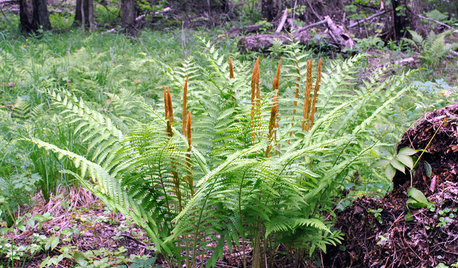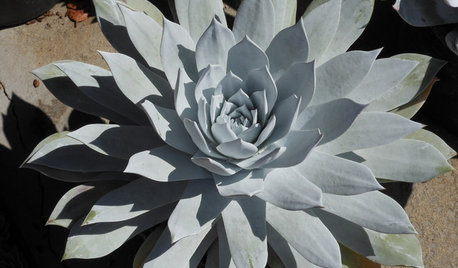Planting on a wet slope and avoiding slugs
lurleene
15 years ago
Related Stories

GARDENING GUIDES10 Solutions for Soggy Soil
If a too-wet garden is raining on your parade, try these water-loving plants and other ideas for handling all of that H2O
Full Story
GARDENING GUIDES10 Top Native Plants for the U.S. Southeast
For a low-maintenance and wildlife-friendly landscape, use Southern natives that withstand heat and humidity
Full Story
GARDENING GUIDESGreat Design Plant: Osmunda Cinnamomea
Cinnamon fern brings spring interest and summer cool to the shade garden
Full Story
GARDENING FOR BUTTERFLIES3 Ways Native Plants Make Gardening So Much Better
You probably know about the lower maintenance. But native plants' other benefits go far beyond a little less watering and weeding
Full Story
FARM YOUR YARDHow to Build a Raised Bed for Your Veggies and Plants
Whether you’re farming your parking strip or beautifying your backyard, a planting box you make yourself can come in mighty handy
Full Story
GARDENING GUIDESGreat Garden Combo: 3 Wonderful Plants for a Deer-Resistant Screen
Protect your privacy and keep deer at bay with a planting trio that turns a problem garden area into a highlight
Full Story
LANDSCAPE DESIGNThe 7 Best Plant Types for Creating Privacy and How to Use Them
Follow these tips for using different kinds of plants as living privacy screens
Full Story
FALL GARDENINGWhy Fall Is the Best Time for Planting
Spring is overrated for planting. Starting plants in autumn has advantages for both garden and gardener
Full Story
GARDENING GUIDES6 Plants That Beat Butterfly Bush for the Wildlife Draw
It's invasive, a nonnative and a poor insect magnet. Check out these better alternatives to butterfly bush in the garden
Full Story
GARDENING GUIDESGreat Design Plant: Dudleya, a Dramatic California Native
Set up this succulent in native conditions and see just how little care it needs to thrive in the landscape
Full StorySponsored






arijah
lurleeneOriginal Author
Related Professionals
Windham Landscape Architects & Landscape Designers · Rancho Palos Verdes Landscape Architects & Landscape Designers · Springfield Landscape Contractors · Mastic Beach Landscape Contractors · Pahrump Landscape Contractors · Peachtree City Landscape Contractors · Rancho Santa Margarita Landscape Contractors · Woodbury Landscape Contractors · San Antonio Siding & Exteriors · South Glastonbury Siding & Exteriors · Cerritos Solar Energy Systems · Downers Grove Solar Energy Systems · Prunedale Solar Energy Systems · Laguna Woods Solar Energy Systems · Richfield Solar Energy Systemsrudymegan
Belgianpup
brendan_of_bonsai